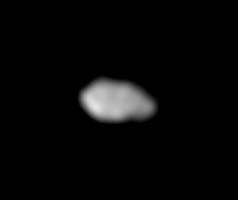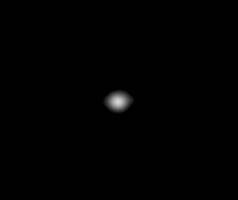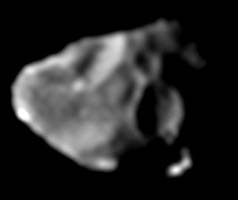| Jupiter's inner moons |
| Jupiter's inner moons |
Jupiter's inner moons
|
||
 |
1. | Metis Metis is the innermost of Jupiter's known satellites: orbit: 128,000 km from Jupiter diameter: 40 km mass: 9.56e16 kg Metis was a Titaness who was the first wife of Zeus (Jupiter). Discovered by Synnott in 1979 (Voyager 1). Metis and Adrastea lie within Jupiter's main ring. They may be the source of the material comprising the ring. Small satellites within a planet's rings are sometimes called "mooms". |
 |
2. | Adrastea Adrastea is the second of Jupiter's known satellites: orbit: 129,000 km from Jupiter diameter: 20 km (23 x 20 x 15) mass: 1.91e16 kg Adrastea, the distributor of rewards and punishments, was the daughter of Jupiter and Ananke. Discovered by graduate student David Jewitt (working under Danielson) in 1979 (Voyager 1). Metis and Adrastea orbit inside the synchronous orbit radius and inside the Roche limit. They may be small enough to avoid tidal disruption but their orbits will eventually decay. Adrastea is one of the smallest moons in the solar system. |
 |
3. | Amalthea
|
Photos: http://www2.jpl.nasa.gov/ |
4. | Thebe Thebe is the fourth of Jupiter's known satellites: orbit: 222,000 km from Jupiter diameter: 100 km (100 x 90) mass: 7.77e17 kg Thebe was a nymph, daughter of the river god Asopus. Discovered by Synnott in 1979 (Voyager 1). |